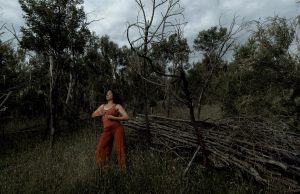A unique movement and expressive arts therapy practice
which supports you to strengthen your connection to Self
It is client-focused, valuing and supporting client resilience and self-discovery. Inviting, rather than directing or instructing, utilising non-directive, non-interpretive, neutral, encouraging language.

MOVEMENT & EXPRESSIVE THERAPY – WHAT IS IT?
Movement and Expressive Therapies offer a comprehensive way of supporting psychological and emotional wellbeing. These therapies have joined the widening field of non-verbal, non-analytic, and non-diagnostic approaches to psychological health where the body-mind connection and creative enactment are central to the therapeutic process.
"Dance belongs to the oldest form of medicine and psychotherapy in which the common exaltation and release of tensions was able to change man’s physical and mental suffering into a new option on health" – J. Meerloo, 1968
The American Dance Therapy Association, 2012, defines dance-movement therapy as "the psychotherapeutic use of movement to further the emotional, cognitive, physical and social integration of the individual…based on the empirically supported premise that the body, mind and spirit are interconnected."
"Through dancing I discovered that when you put the psyche in motion, it heals itself" – Gabrielle Roth, 1998
Founders of the Expressive Therapies Institute of Australia, Mark Pearson and Helen Wilson 2009, state that Expressive therapy involves “adaptations and processes created from a blend of creative arts therapies, emotion-focused approaches, Gestalt, Jungian and transpersonal psychology, with a psychodynamic orientation. It is an integrated collection of process-generating, growth-focused, change-oriented, creative techniques designed for use in counseling, psychotherapy and personal growth… It has an emphasis on working through challenging emotional distress as a way to develop emotional resilience.”


PROCESSES often used include:
- Somatic & Body focus awareness exercises
- Intuitive movement
- Emotional mapping
- Expressive writing, self discovery worksheets & use of journals
- Process drawing
- Sand-play; Symbol work
- Meditations; Visualisaitons
“Dance is one of man’s most basic means of expression, through the body, man senses and perceives the tensions and rhythms of the universe around him, and then using the body as an instrument, he expresses his feeling responses to the universe. From the fabric of his perceptions and feelings, he creates his dance. Through his dance he relates to his fellow man and to his world” – Alma Hawkins


BENEFITS INCLUDE:
| * Healthy self-awareness and compassion |
| * Increases emotional regulation skills and clients interest in self-discovery |
| * Increases mindfulness of the body and present-moment focus, allowing individuals to become aware of sensations, emotions and thoughts that arise in the mind without judgment or reactivity |
| * Awakens dormant creativity |
| * Leads clients to a better understanding of their unconscious and a means for accessing hidden resources |
| * Provides opportunities for safe release of distressing unresolved emotions, aids emotional and physical integration and well-adjusted self-esteem |
| * Improves communication, behavior and improves interpersonal skills |
| * Construction of new personal narratives and creative positive problem solving |
| * Encourages active participation |
| * Builds resilience, defined as a reintegration of self that includes a conscious effort to move forward in an insightful integrated positive manner as a result of lessons learned from an adverse experience |
| * Enhances quality of life |